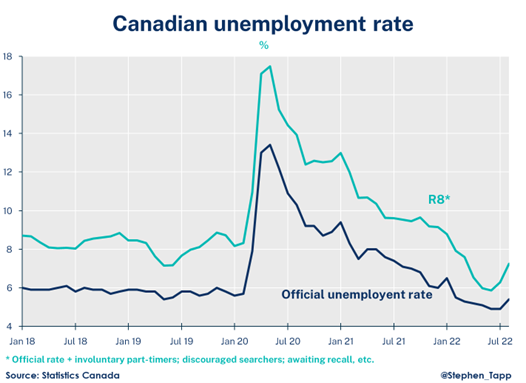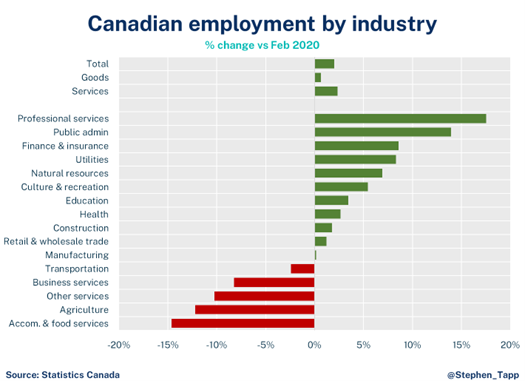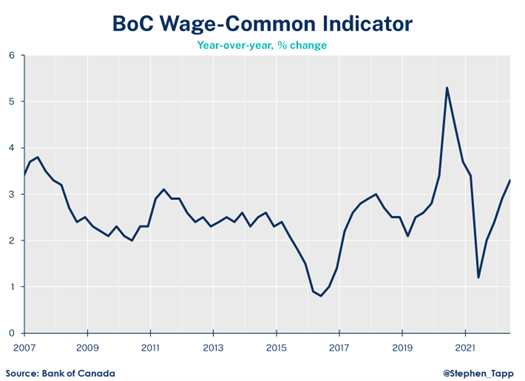Blog /
Labour Force Survey for August 2022: Slowing down
Labour Force Survey for August 2022: Slowing down
After three straight months of falling employment, Canada’s red hot labour market has started to cool off.

September 9, 2022


After three straight months of falling employment, Canada’s red hot labour market has started to cool off.
Stephen Tapp, Chief Economist, Canadian Chamber of Commerce
KEY TAKEAWAYS
- Canadian employment fell by 40,000 jobs (-0.2%) in August — worse than the modest gain the market expected (+5k to +15k). This is the third consecutive monthly drop, which brings the cumulative decline to 114k net jobs (-0.6%) since May, which have been primarily full-time jobs.
- Total hours worked were unchanged (after falling 0.5% in July), though they remain up a healthy 3.7% year-over-year.
- The unemployment rate, which had been on a steady downward track to new record lows, increased significantly (to 5.4%, up 0.5 percentage points).
- Employment losses in August were concentrated in full-time jobs (-77k, as part-time employment rose 38k), and in education (-50k, -3.3%, although perhaps we should view this result with caution until we get September data, given that the timing of school contracts changes from year-to-year) and construction (-28k, -1.8%). “Other” and professional services continued to make gains. By gender, employment was down for both women (-23k) and men (-17k).
- Despite the recent slowdown in employment, labour markets remain tight. With employers looking to fill over one million job vacancies, and inflation near generational highs, wage growth accelerated to 5.4% year-over-year (up from 5.2%). Wages for non-unionized workers are up more (6.3%) than for the unionized (3.6%), where gains for the latter may be delayed until collective agreements expire and are renegotiated.
- Retirements are creeping up among baby boomers (307k annualized in August 2022, compared with 273k in August 2019). StatCan estimates that population aging reduced Canada’s labour force by 374k over this three-year period!
- Provincial employment fell in BC, Manitoba, Nova Scotia, but was up in Quebec. Moves in other provinces didn’t exceed the survey margin of error.
- In August, more than 1-in-4 workers were either fully remote (17%) or hybrid (9%).
SUMMARY TABLES



For more economic analysis and insights, visit our Business Data Lab.
Other Blogs

Vaccines: A Potential Key to Unlock Many of Canada’s Healthcare Challenges
This featured blog was provided by GSK

Cybersecurity Is Foundational to Canada’s Economic and National Security
Highlights from the Cyber. Right. Now. Council’s In-Person Meetings with the Government of Canada

Canadian Chamber of Commerce Discusses Bill C-78 and the GST Holiday with Senate Standing Committee on National Finance
While the GST pause, scheduled from December 14 to February 15, was introduced rapidly, it did not address the underlying causes of Canada's affordability crisis.












